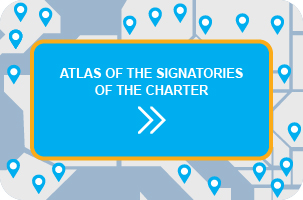Vienna – a model city for Gender Mainstreaming
The City of Vienna in Austria started their work with gender mainstreaming in 2000, focusing on making this a cross-cutting strategy for the whole municipality. By investing in gender mainstreaming, the City aims to “achieve positive socio-political change for all its citizens”. The objective is to better meet the needs and demands of all its citizens and thereby improve quality of public services. This is done through evaluations and by considering all users of public services, not only from a gender perspective but also from a social, ethnic and health-related perspective.
The first step of this initiative was to integrate a gender perspective in the design of urban planning and also to develop and implement targeted projects for women. At this first stage, concept and methods were developed and tested to provide general guidelines for the implementation of gender mainstreaming in all areas.
The City of Vienna has also integrated gender budgeting in their budget proposals since 2006, reviewing all parts of the budget from a gender-perspective and presenting, in a separate chapter, who benefit from different items in the budget.
As a second step, the City focused on structural and systematic implementation of gender mainstreaming by concentrating the activities on raising awareness, transferring knowledge and developing evaluation and reporting methods. Municipal officers in charge of gender equality have also been appointed.
Examples
- Urban planning – cemeteries
When analysing the visitors of cemeteries, it became clear that a majority of the visitors were elderly women. To adapt the cemeteries to their needs, the municipal department is currently improving and facilitating the accessibility (e.g. access of benches), making signs clearly visible and providing safe restrooms.
- Public lighting and safety in public spaces
Good lightening is needed not only along roads but also along sidewalks, in parks etc, in order to improve the security for women, pedestrians and cyclists in general.
In the Resselpark at Karlsplatz in Vienna, all paths and bicycle stands were provided with lighting. A campaign focusing on improving lightening in parks and public spaces was also launched to especially highlight 200 parks in Vienna.

Measures to improve safety in underground car parks have also been implemented, by increasing the lightening, visibility of entrances and exits, installing cameras, hiring security staff and providing specific parking spaces for women visible for guards and close to exits and elevators.
- Gender-sensitive education in day care centres for children
Gender-sensitive education in day care centres for children has been established in many places in Vienna. This consists in having both women and men working as teachers, providing pedagogic avoiding stereotyped areas for playing, revising school material and songs to avoid traditional gender roles. In one department, a special gender sensitive “education box” was developed. This was distributed for free to all municipal day care centres.
- Awareness raising campaign
A campaign called “Vienna sees it differently” was launched to raise awareness and inform administrative staff working at the municipality as well as citizen about the stake of gender mainstreaming. In the campaign, pictures from common signs were used and reversed by gender – for example changing the signs for tabled in restrooms showing a man changing the diapers of a baby, or showing women working with construction, etc.

Extensive training programs have also been offered for municipal employees to support them in integrating gender equality in their work.
Sources:
City of Vienna
Ursula Bauer, Project Manager for Gender Mainstreaming, City of Vienna













